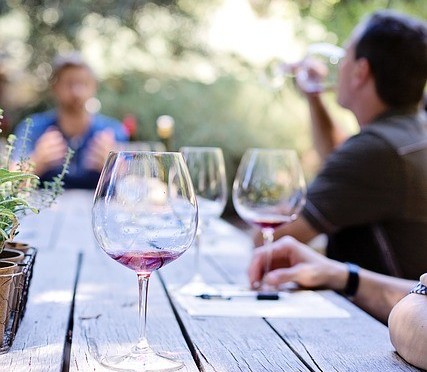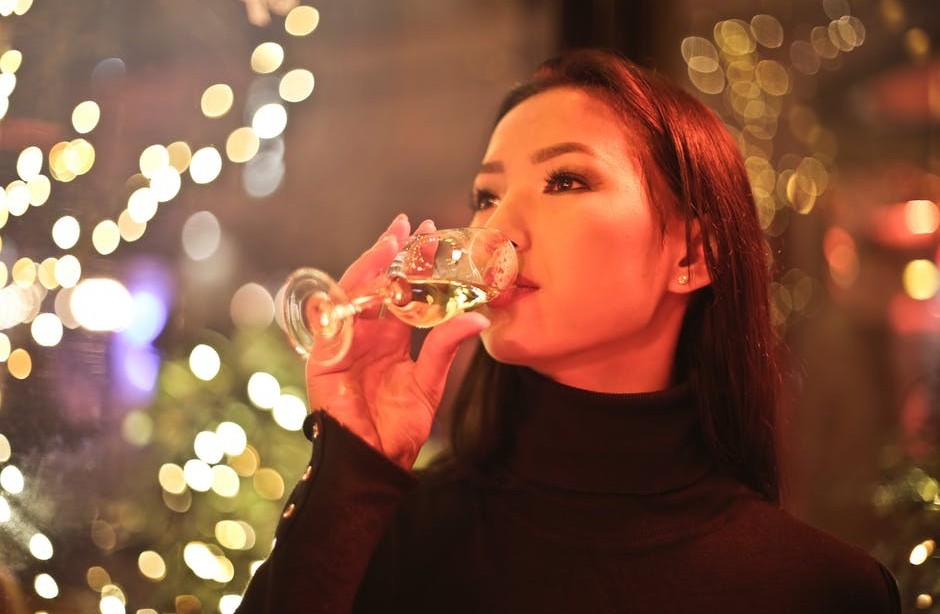Most people will go to restaurants; they’ll go to a bar and know the wine a bit. But that’s very different from the wine tasting in the winery. A tasting room is an opportunity to try wine side by side and then go to another winery and try wine side by side again. And each place you go, the ways are different. 
Why is the Wine Tasting In the Winery So Desirable?
And why is this important as that? The conscious mind does not control taste. Taste is controlled by the limbic system, the deeper parts of the mind. It’s the part related to emotions, and that part of the brain, like emotions, never forgets a flavor or scent. So as you taste your way through tasting rooms, you build up a bigger and bigger library of flavors. That later on, when you’re drinking wines, you’re going to bring that to bear. So after a weekend of wine tasting, the next time you go into a restaurant and have a glass of wine, it will taste very different to you. Why is this so? Because your body has read more deeply on the subject. When people are tasting, they do certain things. It’s not meant to be snobbish; it’s about allowing your body to appreciate and understand the wines. People will often say, and it’s quite true, that the wine always tastes better at the winery. And that’s partly because you’re in an environment where we all talk about food, wine, and weather. So, of course, you’re going to enjoy it more because that’s what you’re focused on.
A Proper Glass is Very Important
Wineries are very careful with the wine glass that they choose. This is a significant reason why wine tasting in the winery is such a fantastic experience. Years ago, when I was young, we had tiny wine glasses; over the years, they’ve gotten bigger and bigger. Why? Because we have wonderful growing conditions. A very long growing season allows us to keep the grapes on the vine for a very long time; when you do that, the sugar levels get higher and higher. When the yeast goes to work on it and converts it into alcohol, the alcohol goes higher and higher. The reason for these big glasses is that it allows more space for the alcohol to come off of the wine. You don’t want to smell only the alcohol. You want to smell the fruit also. To do that, you’ll hold the glass sideways. Professionals put their noses right in the glass.
The Nose Is the Major Portion of the Wine Experience

It’s essential to realize that the nose is the major portion of the wine experience. The nose will pick up about 2200 different scents, whereas the palate only picks up about five to six flavors. You can make much different music from five to six notes, but it’s still only five to six flavors with many variations. Typical wines have hundreds of flavors, and if you look at the total number of flavors that are found in wines, there are about a thousand flavors. Compared to this to about three or four hundred for coffee. Wines are very, very complex. But it’s the nose, those 2224 hundred different senses of it pick up, it will read a tremendous amount of information, and it tells you all about the wine.
It Can Be Too Much
When you go into the wine tasting in the winery, they’re going to pour a small amount. The average pour is about an ounce. Now sometimes you have to watch out. If you go into a private tasting, it’s a sit-down tasting; they can get a little heavy-handed. There they might go up to two ounces per glass. Well, if they’re pouring four wines in the course and it’s an ounce per glass, that’s a four-ounce glass of wine. And if you’re going to do two or three of those in the day, you’ll be drinking three to four glasses of wine. And they’re pouring a lot more; they can load you up. When you go with a tour guide, you have to watch out for someone who’s driving you because they’ll know that you’re not driving, and they can start getting a little heavy-handed there. So watch out for that.
Dump the Wine Out
That’s why they have tasting buckets there, but dump buckets and feel free to dump the wine out. Okay, feel free to share a tasting if you’re there with your honey. The wineries never or rarely will ever mind if you share tasting or dump the wine out. Why? Because they don’t want drunk showing up at the end of the day. They want you to taste the wine and enjoy it because they want you to buy it. But why would you buy it there? You can go to some big box store and get the wine cheaper. In truth, they realize that what they often sell in the stores is not what they sell in the wineries. You see the wineries as the best wines to sell at the winery. And they sell the very best wines to their wine club.
Get Back to Tasting
So when they pour the tasting, they’re going to pour about an ounce. The ideal thing is that, and I’m not some expert at this, you should be able to put the glass sideways, and it should stay inside the glass when you do that. Now when you first pour it in, okay, before you swirl it, put your nose on there angled and take a little sniff. Why? There’s a concept called the corked wine. This is due to a bacterium that’s found in corks. It’s a nasty little thing. It doesn’t destroy the wine, but it gives the flavor or the smell of wet newspaper. It’s not pleasant. It happens now and then. It’s one of the reasons why many people like to use twist tops. You can’t quirk wine if you’re not using a cork. Over the years, they’ve improved corks dramatically. It’s much rarer than it used to be, but it still happens. Now before you take a serious sip, you’re going to want to swirl it. And then you bring it to your nose, turn the little sideways and take a sip, and then you want to make sure that the juice gets all over your tongue.
Champagnes
Champagnes have very high acid levels. They’re a cold climate grape that’s grown in a place that gets very cool at night, maintaining high acid levels. The plant will dump the acid out at night if it can. But if it goes to cool, the plant goes dormant, and then it can’t dump the acid out. That’s the key to a good wine grape. A good wine region has to be very hot and dry during the day. Dry protects it from mold. Hot and sunny gives it a chance to make lots and lots of sugar to turn into alcohol and then cool at night so the plant can’t dump out the asset. If it can dump the acid out, then you get what’s called a flabby wine, and there is no situation where the word flabby is meant as a compliment.
Swirl In a Different Way
Now here’s the cool thing. This is interesting. If you swirl to the left, you’ll get more of the barrel’s flavor. If you swirl to the right, you’re going to get more of the flavor of the fruit. This will be most evident, of course, in grapes that have been the barrels. Especially new barrels for a long period. Why this happens has to do with how vortexes function. In which way particles are carried and how the barrel flavor is placed on the molecule. You will notice the difference; besides, having a perfect nose is fun. You’re exploring the wine; you want to see what these flavors are about. Why not try different ways? As I said, with the juice, let it get all over the palate because it’s going to affect different things.
The Wine Has No Bitter
The only place it doesn’t get time to get to is at the back of the throat. Because at the back of the throat are the bitters, and wine typically doesn’t have bitters. So you can taste wines quite effectively and spit them out. It’s rare to see people on vacation doing that, but professionals do it. What’s funny is that you can’t do that with beer. You can’t taste and then spit the beer out. The reason is some of the most important flavors in beer are the bitters. So you’re spitting the best part out.
Start With White
In a wine tasting in the winery, they’re going to start with a white typically, and they’re going to go to a lighter red and then a darker red, and finally, whatever their most popular wine is. And that’s a way in which your palate can kind of work its way up from similar flavors to more complex flavors. It’s also because these big reds stick themselves to your palate. So make sure that in between tastings, you eat something to clean that palate. So you have a little more room to try the next one. So that’s wine tasting. I hope you enjoyed it.
